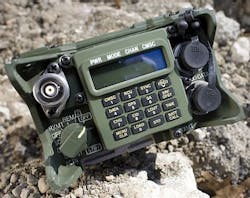Xilinx FPGA-based VME and VXS-based embedded computer for digital signal processing introduced by Tekmicro
All FPGA sites on the board use FF1759 to support LXT devices that are optimized for high density logic, and SXT devices that are optimized for digital signal processing.
Each front-end FPGA on the board has two 1- and 6.4-gigabyte-per-second DDR3 memory banks for simultaneous full-rate DRFM applications and snapshot data capture for each input stream. The back end FPGA has two banks of DDR3 memory and two banks of QDR II+ memory. An onboard Gigabit Ethernet switch connects the front panel interface, backplane interfaces, FPGA nodes, and system management processor control and status monitoring. The VXS high-speed switch fabric also supports dual 10 Gigabit Ethernet using 10-gigabyte ASE-KX4 interfaces with appropriate protocol cores in the back end FPGA.
For more information contact TEK Microsystems online at www.tekmicro.com.
